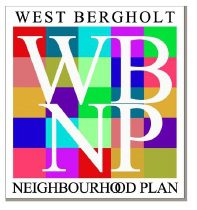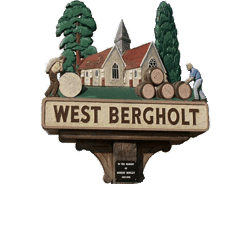
Neighbourhood Plan – What’s in it for us?
Introduction
In December 2011 the Localism Act was passed by parliament and came into operation. The act is complex and much has been written about its intent. What is clear is that communities (with the relevant credentials), will be given more of a say in how they can shape their future develop. This means the future development of West Bergholt is in our hands more than third parties such as Developers, Colchester Borough or Essex County Council and in some respects Central Government.
The village has a Parish Plan and Village Design Statement. These were put in place following a detailed and lengthy work programme completed by village volunteers. Both were adopted by Colchester Borough Council as supplementary planning guidance documents and they provide an aspirational plan for the future of our village reflecting the findings from community wide consultation programmes. Individually they do not provide a holistic strategic plan for the village and have a limited effect on curbing the desires of a developer whose intent is based upon maximizing profit.
Neighbourhood Plans have been introduced by Government under the Localism Act allowing communities to have much greater say on community planning. In addition, the Act allows communities to benefit from development funding resulting in the provision of enhanced community services and assets. A NP can provide a holistic strategic plan for Parish Council guidance when making community development decisions. The NP provides a basis for third parties to note and comply with in development and planning terms.
Communities with a NP have the means to define the “what, where and timeframe” of change for the area defined by the NP. There must however be a clear understanding that a “No Change” option is not permissible in NP development terms.
The future development of our community and the facilities it will provide for generations to come will be determined by a correctly compiled and approved NP. The work undertaken by the NP group should pay dividends in the future and those involved can justifiably be proud to have shaped the future of West Bergholt for generations to come.
What is the Neighbourhood Plan and Why Bother
Most residents are not interested in politics or necessarily in the way decisions are reached that impact community life. Most are too busy getting on with their lives and are content to leave it to others to make important decisions for the community.
In contrast most residents really care about the community and want it to be the place of choice for our children and perhaps their children’s children to live and perhaps work in the future. The Localism Act recognises this situation and where there is a desire for people to have a say then residents are given more control over local decision that directly affect the community where they live.
The theme of local decisions made by local people is so entrenched in the act that for the first time a referendum must be part of the village NP approval process to demonstrate community support for the plan. A majority vote at the referendum is the first major hurdle of the NP approval process, signifying acceptance of some key points including;
- Acceptance that future development change will occur, however any change will be greatly influenced by the approved NP.
- A focus on what is wanted by the community over time thereby influencing village sustainability.
- A demonstration that its plans for the future are not only acceptable to the majority of residents but also that the plan complies with legal statute.
- An acceptance that the NP means change will occur which in turn which are linked to benefits that accrue for the community as a whole.
- An appreciation that there will be some bureaucratic “hoops to jump through”. Whilst some of these hoops may appear pointless at first glance, they help demonstrate that there is a will and ability for the village to succeed and determine the shape and pace of change.
Aims and Objectives of the Neighbourhood Plan
The main aims of the NP appear below and these are incorporated within the NP constitution.
- To produce a Neighbourhood Plan for West Bergholt that fulfils the requirements needed for adoption of the plan by Colchester Borough Council.
- To define neighbourhood planning powers to establish general planning policies for the development and use of land in the parish. These are described legally as ‘neighbourhood development plans’.
- To obtain information as necessary to influence the statutory authorities and other decision-making bodies on planning considerations which affect and are acceptable to village residents.
- To allow all residents and businesses within West Bergholt an opportunity to have their say on all aspects of community planning and development and considerations that directly affect the community.
These Aims are important and vital elements of a NP. Achieving these aims comes with conditions which need addressing before the NP can be put to a community referendum and legally come into force.
The following general conditions ensure the NP is legally compliant and takes account of wider policy considerations (e.g. national policy).
- they must have regard to national planning policy;
- they must be in general conformity with strategic policies in the development plan for the local area (i.e. such as in a core strategy) or put simply do not contradict the core strategy which has been adopted by Colchester Borough Council;
- they must be compatible with EU obligations and human rights requirements.
In reality the “hoops” should not present too big a problem as the boiler plate material to meet these considerations should be readily available from CBC, the Internet, existing approved Neighbourhood Plans, or a combination of these and other sources.
Some Facts and Benefits
Localism provides the opportunity for local decisions to be made by local people. As long as it can be demonstrated that the NP is inclusive and deals with potential and planned growth, then there is no reason why it would not be agreeable to the community when submitted for referendum or by CBC which must approve the plan.
It is clear from the NP meetings already held that the NP group formed from West Bergholt residents, have many if not all of the skills and expertise to produce a robust NP. All that is necessary is to pull together and channel these skills in an effective manner. We have a steering committee supported by a number of residents willing and able to contribute to the contents of the plan. We have agreed the outline roles and responsibilities (or Owners) for the work streams currently identified.We have set realistic timeframes to complete the work required and a project plan that can be used to track progress. We have long and short term residents contributing to the plan.
The Parish Council has committed to provide initial funding and it is reasonable to assume that alternate funding sources may be available if needed to support production of the plan.
On adoption of the NP there are commercial benefits that flow to the community if planning development takes place. For example a Community Infrastructure Levy (CIL) is created for each planning application granted which is paid by the developer. Government has declared that communities with an adopted NP will receive 25% of the respective CIL which can be then put towards community improvements.
The existing Parish Plan and Village Design Statement provide an excellent starting point for creating the NP. It should prove very difficult, if not highly unlikely, for development applications to be granted that do not comply with the NP. The NP will define what is acceptable to the community and what is not. Having a NP means that developers rights to build will be restricted to where the community has agreed growth and that the planning application complies with the type of development specified by the plan.
What if we do not have a Neighbourhood Plan
Initially nothing will alter for a while providing we do not become the target for developers. For communities without a NP there is already a presumption in favour of the developer to build where they can show a need and or a reason to develop.
Without a NP the community will continue to be reliant upon non community bodies to determine the scope and location of development within our village.
Colchester Borough Council has an approved Local Development Framework that specifies planning growth needs within the borough. The process of updating the existing LDF has begun and is likely to take the form of a Local Plan. This will be an unknown factor and when adopted this may or may not include wide-scale development in villages. The Northern Growth Area in Myland is a prime example of how a huge area of farm land and green space will be turned over to accommodate c. 1,800 new homes. This development will be almost equal in size to West Bergholt and Eight Ash Green combined. Myland Community Council is currently developing a Neighbourhood Plan, under the Governments Front Runner Programme. Whilst their plan may address, in part, the massive development that has been largely agreed by CBC, it is likely the NP will be delivered too late to reverse the decision on this massive development.
Without a NP we will have little to help us control our future building strategy. In the past West Bergholt has been blessed by wealthy benefactors with vision to see what was needed to promote health and well-being. These same benefactors provided money to execute their vision and just consider where our village would be without the Orpen Hall, the Lorkin Daniell Playing Field or Poors Land. We are rapidly reaching overuse of these important and well used facilities. As an example, it would be prudent to plan now for adequate recreational facilities to meet the future needs of our village.
A NP could provide a framework for recreational strategy by formally identifying areas that should not be developed for housing or new traditional business growth. Determining what land should be earmarked for recreational development will also help create financial justification that will assist greatly with grant funding applications needed to bring schemes to fruition.
As a further example our future housing needs should be established and there are means to achieve this already in place using for example the Rural Community Council of Essex and the Exception Site programme. It can be argued that West Bergholt currently does not adequately cater for downsizing scenarios for example where our elderly residents wish to move to smaller properties in the village. Micro-community developments providing homes for elderly residents could help free up family properties whilst allowing them to remain in the village. The NP could be used to define where purpose built micro communities would be best located.
There are many other examples of how the NP can be shaped to provide benefits to the community. We want residents to influence how benefits will be achieved and this will be achieved by the results obtained through the planned consultation processes. It must be worth our time to get the plan right and to shape our village future.
In conclusion, can we really afford not to have a Neighbourhood Plan?
Neighbourhood Plan Group
March 2013

